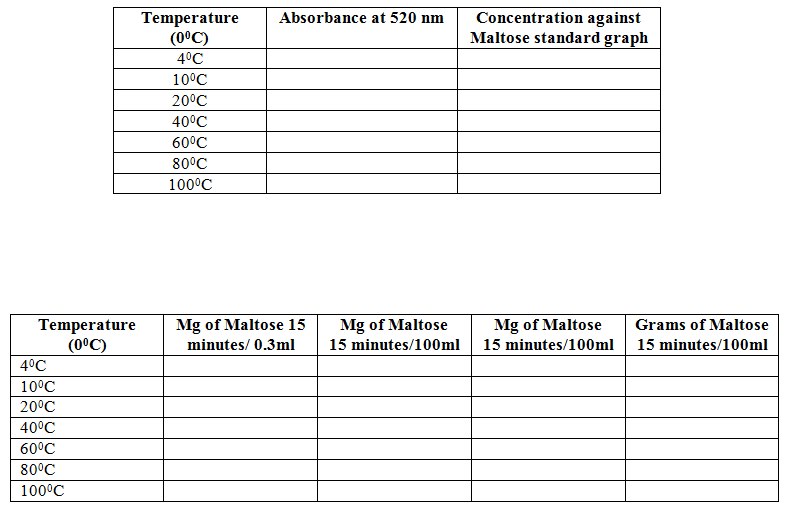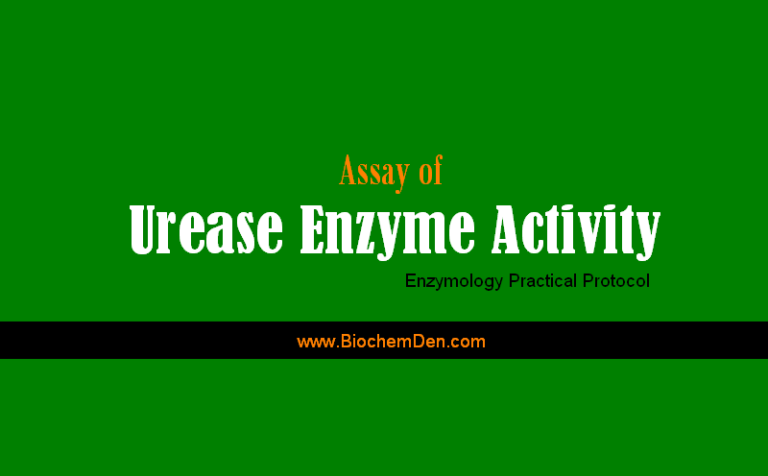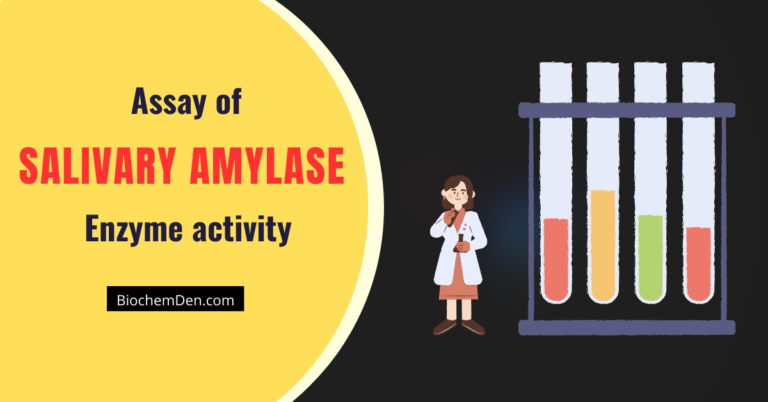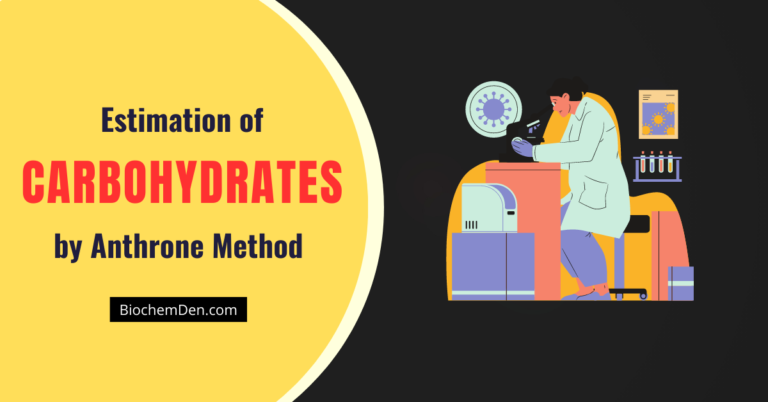Aim:
To study the effect of temperature on enzyme activity and to determine the optimum temperature.
Principle:
In any enzyme catalyze reaction the velocity increases with temperature till it reaches the maximum the velocity decreases with a further increase of temperature this effect of temperature may be due to several reasons.
- An effect on the stability of the enzyme
- An effect on the actual velocity of the breakdown of complex
- An effect on the enzyme-substrate complex.
Reagents:
- 5% Starch in 20 to 100 millimolar phosphate buffer (pH 6.8)
- Preparation of phosphate buffer: Dissolve 0.2M (2.7218 grams) of KH2PO4 in 100 ml of distilled water. To this solution add 0.5M (2.8053 grams) KOH drop by drop till the pH is set to 6.8. then make it to 200 ml of distilled water. So the final concentration is 0.1M of 200 ml phosphate buffer.
- Diluted Saliva (Enzyme source): Saliva is the best and easily available source of amylase collect some saliva in a beaker and dilute it to 1:20 dilution with distilled water.
- 1% NaCl: Dissolve 1 gram of Sodium Chloride in 100 ml of distilled water.
- Dinitrosalcylic acid: (DNS reagent) Dissolve 1.6 grams of NaOH in 20 ml of distilled water. Take 1 gram of 3,5-DNS in NaOH solution. In another beaker take 30 grams of sodium potassium tartrate. Dissolve in 50 ml of distilled water. Mix the volume up to 100 ml with distilled water.
Effect of Temperature on Amylase activity (UPDATED)
Download this protocol in PDF format and use it in your practical laboratory.

Procedure:
- 5 ml of buffer substrate is taken in a series of test tubes and 0.2 ml of NaCl is added.
- The reaction started with the addition of 0.3ml of dilute saliva and incubated at different temperatures (40C, 100C, 200C, 400C, 600C, 800C 1000C).
- The reaction is started by adding 1 ml of DNS reagent. Controls are set up for each temperature.
- The contents are mixed well and the tubes are heated in a boiling water bath for 10 minutes.
- The test tubes are cooled and 10 ml of distilled water is added.
- The color developed is read at 520nm calorimetrically.
- The amylase activity is calculated using a maltose standard graph.
Report:
At optimum temperature, the Amylase activity is _______________ grams of maltose/15 minutes/ 100 ml.
The optimum temperature is ______________C.

Effect of Temperature on Amylase activity (UPDATED)
Download this protocol in PDF format and use it in your practical laboratory.

Discover more from Biochemistry Den
Subscribe to get the latest posts sent to your email.






